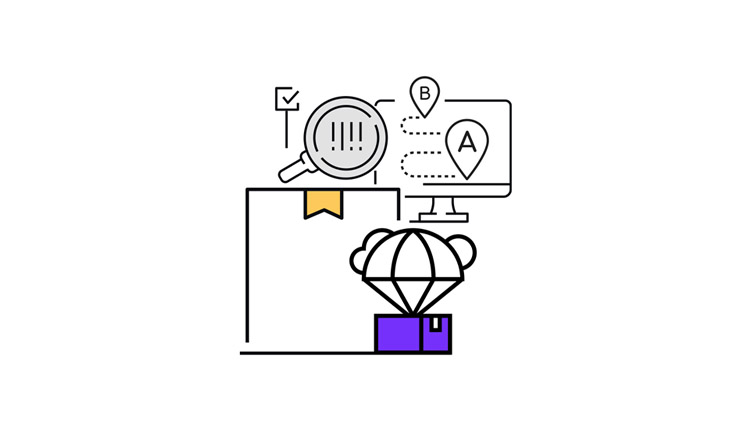When it comes to selling items on Amazon, there are two primary methods for handling fulfillment:
Fulfillment by Amazon (FBA) — in this approach, Amazon manages the storage and fulfillment of your orders.
Fulfillment by Merchant (FBM) — in this method, either you or a third party is responsible for the storage and fulfillment of your orders. Dropshipping is an example of this.
Dropshipping, which is part of the FBM approach, is a distinctive business strategy because you don’t actually own the product; instead, you just list it for sale, wait for it to sell, and then send the order to your supplier. This approach only requires a small initial investment. Amazon FBA vs. Dropshipping in 2024 – Which Is Better?
However, which fulfillment strategy is most suitable for your Amazon business?
What is Amazon FBA?
Amazon FBA can be a convenient option for sellers looking to streamline their logistics and reach a wider customer base.
By utilizing Amazon FBA, sellers can also benefit from Amazon’s vast distribution network and infrastructure, which can help them scale their business more efficiently. Additionally, the ability to tap into Amazon’s trusted brand and customer base can provide sellers with added credibility and exposure in the competitive e-commerce landscape.
Furthermore, Amazon FBA offers sellers the opportunity to focus on growing their business rather than worrying about the logistical aspects of order fulfillment.
This can be especially beneficial for entrepreneurs and small businesses looking to expand their reach and increase sales without the burden of managing warehousing and shipping logistics.
Pros of FBA:
- Convenience. Sellers send their inventory to Amazon’s fulfillment centers and Amazon handles the picking, packing, and shipping.
- Prime. When your products are shipped by Amazon, your products automatically receive the Prime shipping badge on your listings.
- Trust. Customers will put more trust in your product when they see the Prime badge. The customer knows they can receive their product in two days.
- Customer service. Amazon will handle all customer service for orders fulfilled by Amazon.
- Returns. If a customer needs to return an item, Amazon will handle the receiving of your returns.
- MCF. Sellers can use Amazon FBA to fulfill orders on other ecommerce sites using multi-channel fulfillment.
Cons of FBA:
- Standard fees. FBA fees can become costly depending on the size and weight of your product.
- Storage fees. On top of FBA fees, sellers also have to pay monthly storage fees and potentially long-term storage fees if inventory is stored for more than 365 days.
- Restock limits. Amazon has restock limits per storage type, so you may not be able to send in as much inventory as you would like.
- Lost inventory. Amazon may lose some of your inventory during the receiving process — though keep in mind they’ll reimburse you for lost inventory.
What is Dropshipping?
Dropshipping is a retail fulfillment method where a store doesn’t keep the products it sells in stock. Instead, when a store sells a product, it purchases the item from a third party and has it shipped directly to the customer.
This model is popular among e-commerce businesses due to its low startup costs and the ability to offer a wide range of products without the need for inventory storage.
Dropshipping allows businesses to focus on marketing, customer service, and growing their online presence without the hassle of managing inventory. By partnering with suppliers and dropshipping platforms, retailers can quickly scale their product offerings and test new markets with minimal risk.
However, it’s crucial for businesses to carefully select reliable suppliers and maintain clear communication to ensure smooth order fulfillment and customer satisfaction.
What is the difference between Amazon FBA and dropshipping?
These two methods of fulfillment share many similarities, with the main distinction being who owns the stock. In both, the process of processing customer orders is entirely automated and managed by a third-party company.
Who owns the stock? A key distinction between Amazon FBA and dropshipping is that with FBA, you are the owner of the stock and utilize Amazon’s distribution network to manage your orders.
For example, if you’re selling products under your own brand, you would place a large bulk order with a supplier and then send that stock to an Amazon FBA distribution center.
When does the supplier deliver the order? In dropshipping, you only pay for inventory once an order is placed by a customer. You list a product for sale, and once an order is received, you simply request an order from your supplier, who will then deliver the product to the customer.
Who is responsible for customer service and returns? Another key difference is that Amazon takes care of customer service and returns when you use FBA.
Where do the returned items go? With dropshipping, you continue to use Amazon’s FBM fulfillment method, meaning you, as the seller, are accountable for handling returns and customer service. You are not allowed to send returns back to the supplier or manufacturer. Amazon FBA vs. Dropshipping in 2024 – Which Is Better?

